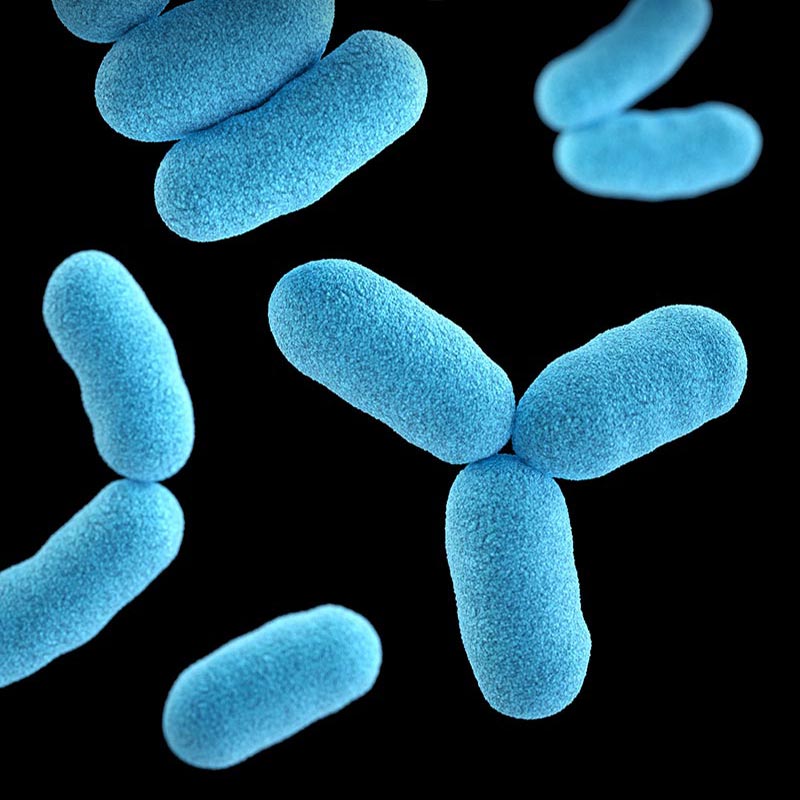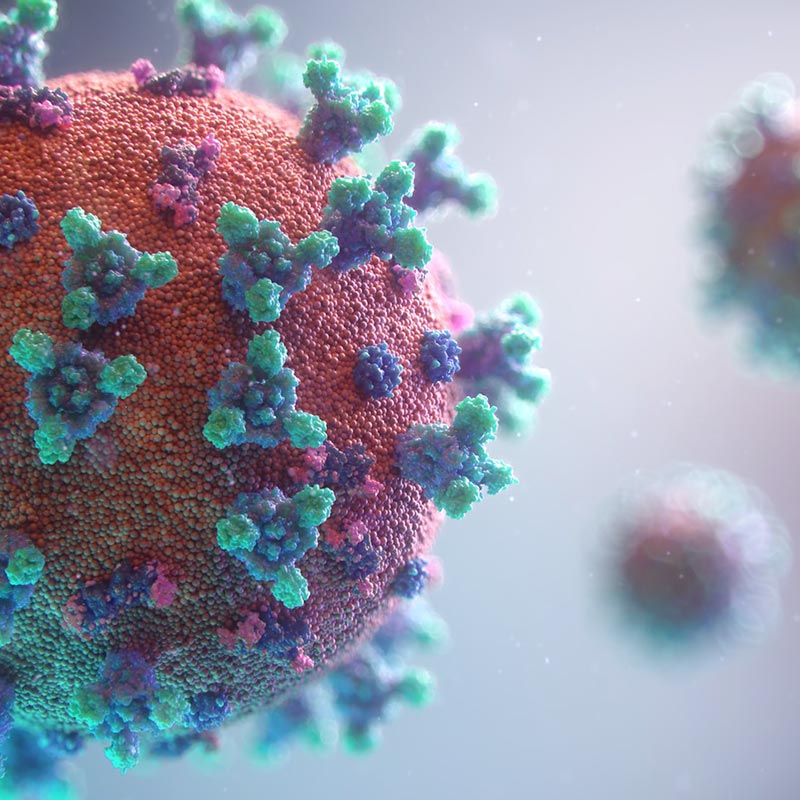Pathogenic microorganisms. How can we fight them?
- 5 July, 2020
- Posted by: administrador
- Category: New Products

The first living beings on Earth were microorganisms. They survived, diversified and managed to expand across the most difficult and varied environments over millennia.
Microorganisms are the smallest living things and can only be seen under a microscope. This broad group includes viruses, bacteria and fungi that swarm around Planet Earth.
Microorganisms’ individual characteristics are as diverse as those of animals and plants, but unlike them, their biological structure is extremely basic since they are unicellular.
From the very early stages of life on Earth, human beings have established relationships of different kind with these tiny life forms, many of them beneficial but many harmful to the human population. In the rush of wars and the thirst for domination over others, humans have used armies of these tiny beings for destructive purposes. Other connection points are the diseases caused by bacteria, viruses, fungi, and protozoa, some of which currently emerge or reappear with resistance, collapsing public health systems. Disease-causing microorganisms are called pathogens, and are responsible for causing infectious diseases.
What is a Virus?
Virus, a Latin term meaning poison, was the name given more than a century ago to some of these microorganisms with similar genetic material (DNA or RNA) enclosed in a protein shell or capsid. Viruses come in different shapes (depending on the capsid) and many are covered by a layer of lipids acquired from the cells they infect. There are many different types of viruses that infect humans and other animals; some viruses cause severe disease while others do not.
Viruses inject the genetic material into the host cell or completely penetrate the cell, releasing the genetic material inside, literally taking over the host’s functions. The goal of the virus, whether it has DNA or RNA, is to produce its components as quickly as possible, assemble them and release them into the environment to infect new cells.
Viruses are not killed, they are rather deactivated. They are organic structures that interact with living beings. They evolve, mutate and are present from the beginning of life on Earth. Viruses are so tiny that they are measured in terms of nanometers, nm, (one nanometer is one billionth of a meter), which makes them extremely dangerous. Well known viruses are Ebola, Zika, Influenza and coronaviruses such as MERS and SARS, which cause respiratory, gastrointestinal, hepatic and neurological diseases.
SARS-CoV2: A new coronavirus identified as the cause of 2019 coronavirus disease (COVID-19) that started in Wuhan, China, in late 2019 and has spread worldwide.
MERS-CoV: Identified in 2012 as the cause of Middle East respiratory syndrome (MERS).
SARS-CoV: Identified in 2002 as the cause of an outbreak of severe acute respiratory syndrome (SARS).
Influenza H1N1: The 2009 pandemic was due to a strain of the influenza A virus, which genetically represents a combination of swine, avian, and human influenza viruses.
Coronaviridae family:
The Coronaviridae family comprises a monogenetic group of 11 viruses which infect vertebrates. The main characteristics of the member viruses are:
Morphological: Enveloped pleomorphic particles typically 100 nm in diameter (range 60-220 nm), bearing about 20 nm long club-shaped surface projections.
Structural: A single-stranded infectious molecule of genomic RNA of about (5-7) X 10(6) molecular weight. A phosphorylated nucleocapsid protein [mol. wt. (50-60) X 10(3)] complexed with the genome as a helical ribonucleoprotein; a surface (peplomer) protein, associated with one or two glycosylated polypeptides [mol. wt. (90-180) X 10(3)]; a transmembrane (matrix) protein, associated with one polypeptide which may be glycosylated to different degrees [mol. wt. (20-35) X 10(3)].
Replicative: Production in infected cells of multiple 3’ coterminal subgenomic mRNAs extending for different lengths in the 5’ direction. Virions bud intracytoplasmically.
Antigenic: 3 major antigens, each corresponding to one class of virion protein. Biological: Predominantly restricted to infection of natural vertebrate hosts by horizontal transmission via the fecal/oral route. Main responsible for respiratory and gastrointestinal disorders.
Members of the Coronaviridae subfamily are widespread among mammals, and often cause mild respiratory or enteric infections. Over 60 coronaviruses (CoVs) have been isolated from bats (BtCoV) and most of these are in the betacoronavirus genus. Bats serve as large (and highly mobile) CoV reservoirs; many bat species have their own unique BtCoV, suggesting a very long history of coevolution. Until 2002, CoVs were considered only minor pathogens of humans. However, an outbreak of severe acute respiratory syndrome (SARS) that began in 2002 was linked to infection with a new CoV (SARS-CoV). The outbreak increased interest in CoV replication, distribution, evolution, transmission, and pathogenesis. In 2014, another coronavirus (distinct from SARS-CoV) was isolated in connection with an outbreak of severe respiratory disease in the Middle East. This virus, called Middle East Respiratory Syndrome coronavirus (MERS-CoV), continues to cause sporadic cases of severe respiratory illness.
What are bacteria?
Bacteria are clearly living things, they have a cellular structure, they have their own metabolism and they reproduce by dividing their primitive, non-nucleus cells known as prokaryotes. The size of bacteria is 1 to 30 nm. Bacteria are classified into 5 groups according to their basic shapes: cocci, bacilli, spirilla, vibrios or spirochaetes and they can exist as single cells or in clusters. Many of the more well known infectious diseases, such as pneumonia, typhoid, syphilis, etc., are caused by bacteria, but only a small group of bacteria cause disease; in fact, there are 10 times more bacterial cells in our body than human cells, the vast majority are harmless and sometimes even beneficial.
Viruses also attack bacteria:
A bacterium which is responsible for hospital-acquired infections uses a virus to trick a person’s immune system into ignoring the bacteria.
The virus is a bacteriophage, or phage (a type of virus that attacks only bacteria) that infects Pseudomonas aeruginosa, a bacterium that is often resistant to antibiotic treatment. The phage prompts the immune system into going after it instead of its microbe host. The bacterium and the phage, called Pf, exist in a symbiotic relationship that scientists suspect is more widespread in the microbial world than previously believed. This finding would help explain why the immune system tolerates helpful bacteria, such as those in the gut, and could lead to better treatments for infections.
Although some phages kill their bacterial hosts, others live happily inside the microbes without killing them. Researchers have long suspected that this coexistence means that the viruses are advantageous for the bacteria in some way.
To fight disease-causing microorganisms, it is very important to frequently wash our hands, which are the most common way of spreading microorganisms from one place to another, clean and disinfect surfaces, such as countertops, floors, furniture, equipment, tools, machinery and others present in all public and private places, with which we are daily in contact.
For information on liquid hand sanitizer, surface cleaners and disinfectants authorized by ANMAT and SENASA, contact us at ventas@diransa.com.ar; one of our experts will get back to you soon.




